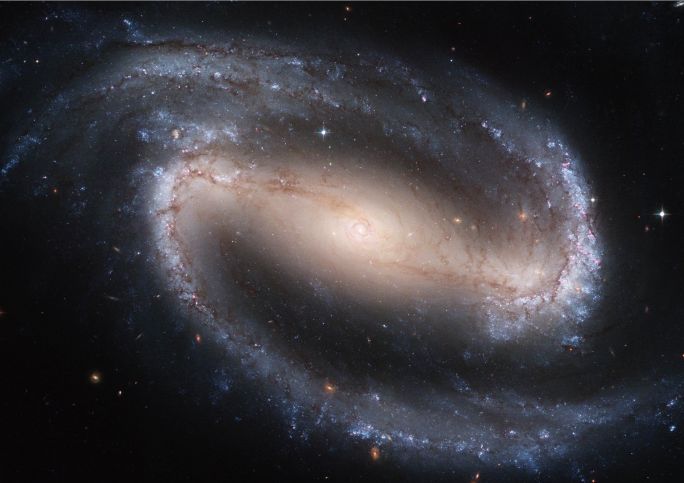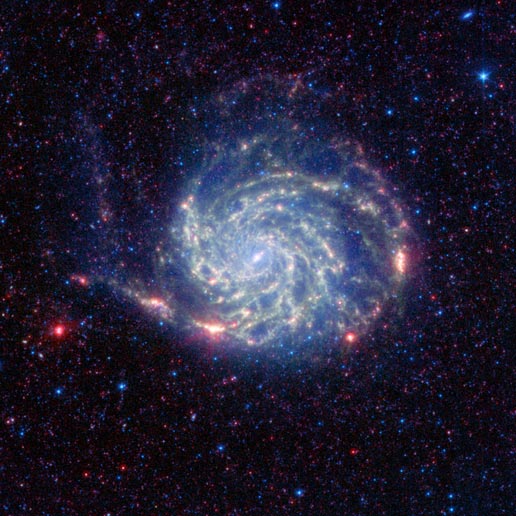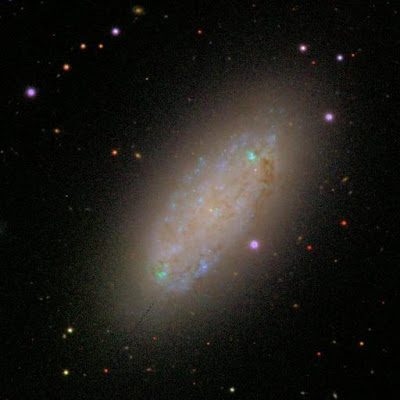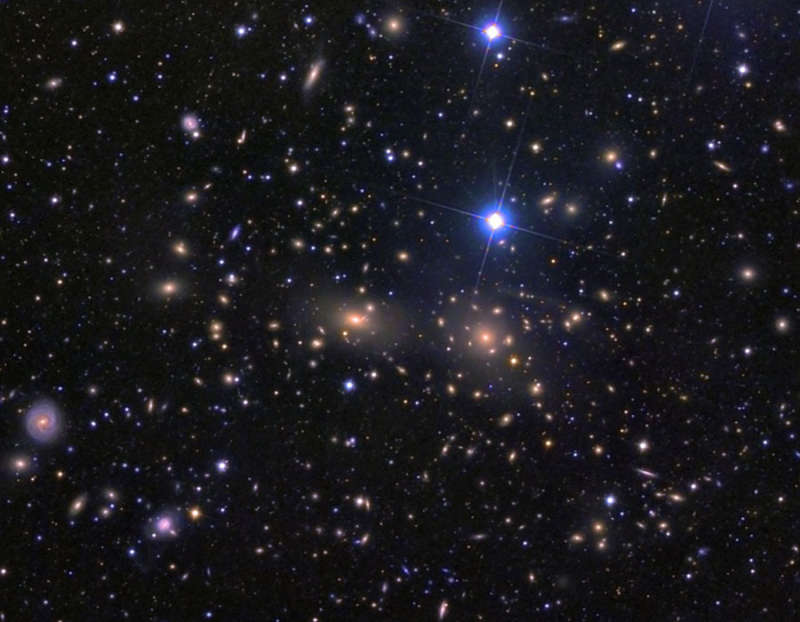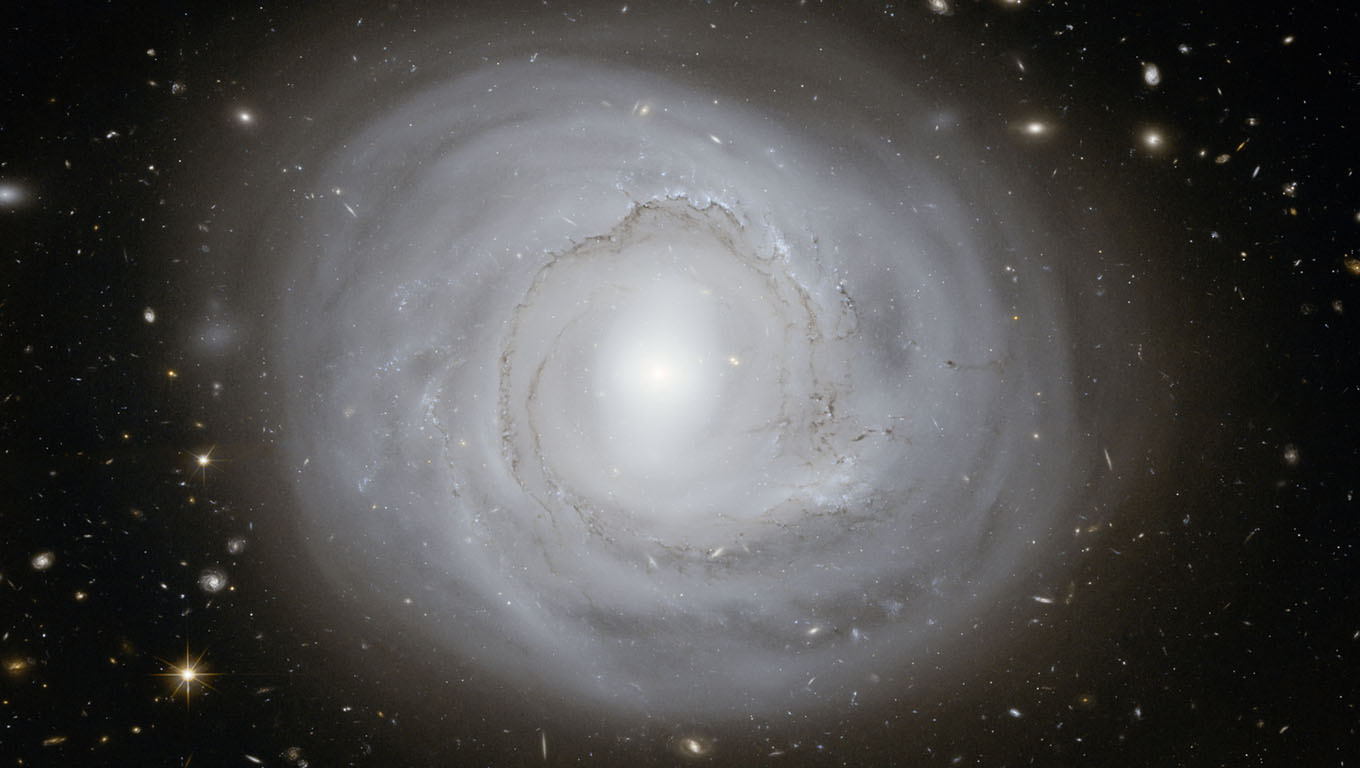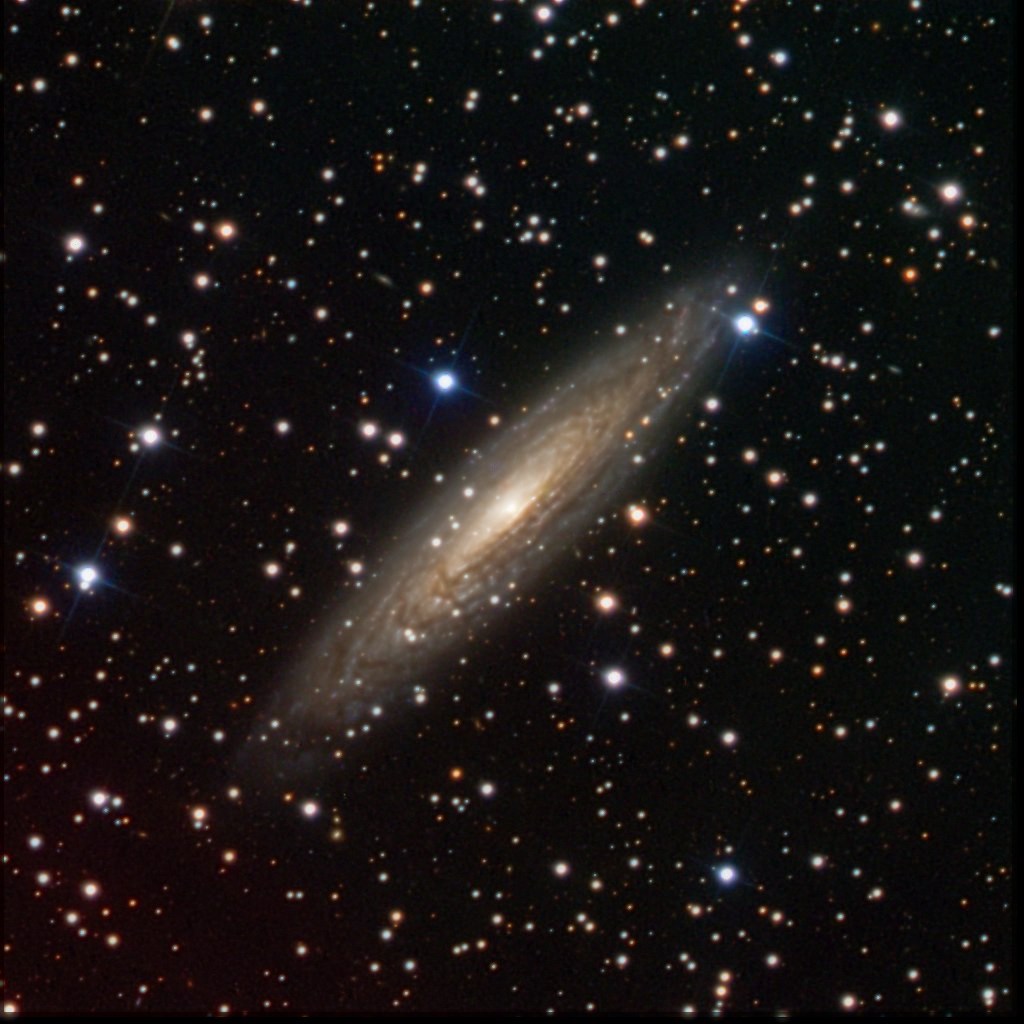Doug Ettinger wrote:
Ann, you are describing the colors of various regions of stars as foretelling their age. I know that colors of stars reveal their temperatures. Also, colors in certain wavelengths reveal types of elements and molecules. A beige color region of stars may reveal that they are K and M-type stars, but how does this fact indicate their age ? These low mass stars may have been born one billion years ago or 10 billion years ago.
It is not so much the presence of red dwarfs and red giants that shows that the stellar population in a galaxy, or in a part of a galaxy, is old. It is the absence of bluer stars that proves that stars are old.
Like you said, any galaxy at all will contain red dwarf stars. To the best of our knowledge, red dwarf stars are
always created where stars are being formed at all. Compare this with the situation in our own solar system. We have one Sun, two gas giants, two ice giants, four rocky planets, a large number of minor planets, and a bewildering number of moons, plus an even greater number of rocks and rubble orbiting the Sun. In our solar system, the larger a body is, the more unusual it is, generally speaking. And the smaller it is, the more objects of a similar size exist in our solar system. Smaller bodies are more common than bigger ones, and this is true among the stars, too.
We keep being told that our Sun is an average star. That is not true at all! The average star in the Sun's neighbourhood is about half as massive than the Sun. And because the Sun is about twice as massive as the average star, it is many times as
luminous as the average star. The nearest star apart from the Sun, Proxima Centauri, is a true little runt. I'm not sure how massive it is, and don't have the energy to try to find some information about it, but let's say that it weighs no more than 20%, or at best 30%, as much as the Sun. Okay, but do you know how faint it is? It is about ten thousand times fainter than the Sun, or rather, the Sun is about ten thousand times brighter than Proxima Centauri in visual light! That's pretty amazing! That means that it takes 10,000 stars like Proxima Centauri to shine as bright in visual light as just one star like the Sun!
All right, but now consider Rigel, the blue supergiant in Orion. Rigel shines about 60,000 times brighter than the Sun in visual light. That means that
one star like Rigel shines as brightly as 600,000,000 stars like Proxima Centauri!
This is my point. Blue stars are never very numerous, but as long as they are main sequence stars (like the Sun) or giants (like Rigel) they are so bright that they outshine huge numbers of fainter and redder stars. That is why so many galaxies look bluish. It is not because they lack red dwarfs, because no galaxies lack red dwarfs. No, it is because they have a good or fair supply of bright blue stars, whose light outshines the light from the redder stars.
But the bluer and brighter a star is, the more massive it is. And the more massive it is, the faster it will evolve and die. Put simply, the blue stars don't last long, and the bluer they are, the faster they are going to die. On the other hand, the redder and fainter a star is, the less massive it is, and the less massive it is, the longer it will live. A typical red M-type dwarf is expected to live many times longer than the current age of the universe. Therefore,
no red dwarf that has ever formed in our universe is supposed to have died, except perhaps through some incredibly weird accident (like being eaten by a black hole or something). But the blue stars always die quickly.
Take a look at NGC 1313 again:
NGC 1313 has undergone a recent massive starburst. A respectable number of highly luminous blue stars were formed during this starburst. I'm talking about stars like Theta1c Orionis, the O6 star that is ionizing the Orion Nebula. A larger number of not-so-luminous blue stars were also formed, stars like bright-looking B7 star Regulus, the alpha star in the constellation Leo. Many more blue-white A-type stars were formed, stars like Vega and Sirius. Still more white F-type stars were formed, stars like Procyon. Still more G-type stars were formed, like the Sun. Very large numbers of K-type stars were formed, like Epsilon Eridani. And huge numbers of M-type stars were formed, but they are so faint that they don't contribute much light, despite their prodigious numbers.
When a galaxy has undergone a recent starburst, it produces a lot of blue light, because of its highly luminous young blue stars. But it doesn't take long until the blue stars begin to die (and before they die they turn red, or at least yellow-orange, too. Famous red supergiant Betelgeuse was originally a blue star.)
As the bluest stars die, the slightly less blue stars hang on a bit longer - I'm talking about stars like Vega and Sirius. An O star can live no more than ten or, at most, twenty million years, but an A star like Vega or Sirius can live for 300 million years or more. But no A star can last for a billion years. After a billion years, all the Vegas and Siriuses that were produced in the starburst are gone. Some F stars are left, but after two or three billion years the F stars are gone, too. After five to ten billion years the G stars are gone. So, after ten billion years, what is left of the original starburst? Well, all the K stars are left. They are faint, and much fainter than the Sun, but at least they are not as ridiculously faint as the M dwarfs. They do produce a bit of orange light. But also a lot of G stars have turned into red giants, and they are quite bright, though not as bright as the brightest blue stars. Still, they can shine a few hundred times as bright as the Sun shines today - and they can do that even though they don't necessarily contain more mass than the Sun. They are therefore very bright for their masses. Red giants don't last very long, but as long as there is a good supply of G-type stars like the Sun, there is a good supply of stars that can turn into red giants. The Sun is destined to end its days as a red giant.
Take alook at the picture of NGC 1313 again. This galaxy contains a lot of bright blue and pink regions. The light output from the blue regions is dominated by not very large numbers of highly luminous blue stars. There are white, yellow, orange and red stars there too, but they are so faint compared with the bright blue stars that the total light ouput from these "starburst regions" is blue.
But the blue stars don't last long.
Bright blue stars are always young. A part of a galaxy that appears to shine with blue light contains young stars. That is always true.
Similarly, a galaxy that is all yellow does not contain any bright O stars or any bright B stars. It may possibly contain very small numbers of A-type blue straggler stars, but these stars will be so few in number and so scattered that they will not contribute noticeably to the light output of any part of the galaxy. A galaxy that shines with an all yellow light is always old. Admittedly it is not possible to say just how old it is just because it is yellow. A galaxy dominated by eight-billion-year-old stars will be as yellow as a galaxy dominated by ten- to twelve-billion-year-old stars. But in any case, the stars of an all-yellow galaxy (or an all-yellow part of a galaxy) will be many billion years old.
Take a look at NGC 1313 again. Look at the beige "envelope" of stars surrounding the bright blue and pink regions. Beige is a shade of yellow - you can say that it is a very faint shade of yellow, sort of mixed with a bit of black. Therefore, the stars in this beige envelope are basically all yellow. There are not huge numbers of them, which is why their light is faint. Still, the fact that their light is beige proves that they are old, many billions of years old. Because if there were younger stars among them, these younger stars would shine relatively brightly with a considerably whiter light, which would affect the overall color of this part of the galaxy. And if they were even younger stars there, the overall light would be bluish.
Take a look at this picture of galaxy M106 - and the picture is so large that I can only post it as a link:
http://images.astronet.ru/pubd/2009/05/ ... KC2048.jpg
The overall color balance here is too bluish, which means that there are parts of this galaxy which are really quite yellow, but which don't look very yellow here.
Anyway, you can see that the very center of the galaxy is bright yellow. That is because there are truly huge numbers of old reddish and yellow stars here. The stars here are typically M dwarfs, K dwarfs, a few G dwarfs like the Sun, and a relatively large population of red giants. No stars have formed here for billions of years.
Outside the very center is the bulge, which is really quite yellow, although it doesn't look that way here. There are few if any young stars here. But the stars are not as densely packed in the bulge as they are in the very center, so the light from the bulge is fainter. (There are red outflows of ionized hydrogen from the center, which may be slightly similar to the gigantic outflows from the center of nearby relatively small galaxy M82.)
The bulge of M106 appears to be "encircled" by two arms, which contain quite a bit of star formation. You can see young blue star clusters here, and a few bright pink emission nebulae. But I want you to pay attention to a stretch of almost aqua-color light at a position of about one o'clock, below and to the left of a string of pink emission nebulae. This stretch of aqua light is a post-starburst region. All the brightest, bluest stars that formed in this starburst have died, but all the A stars are still left. In combination with the red giants that have formed out of what used to B-stars, this part of M106 shines with an aqua-colored light.
Finally, take a look at the very blue outer arms. Why are they so blue? I'd say that the reason is that there are not very many stars out there, and therefore there aren't very many red giants out there. Therefore the bright blue stars that have formed out there don't have a lot of "competition". Therefore the blue light from a few highly luminous stars dominate the outer arms completely.
So in short, this is how you can tell from the color of a galaxy, or from the color of a part of a galaxy, how old the stars of it are. If the stellar population is all yellow, then the lack of blue stars means that the stars are invariably old.
Ann







